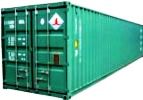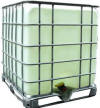| Mubychem Group, established in 1976, is the pioneer manufacturer of Quick Limeor Lime or Calcium Oxide, Pharmaceutical, Fragrance & Flavor chemicals in India. Mubychem Group has several manufacturing facilities spread across Gujarat and Mumbai India and world wide contacts and toll manufacturers. We are exporting globally to countries like USA, Canada, Europe, UAE, South Africa, Tanzania, Kenya, Egypt, Nigeria, Uganda, Turkey, Mexico, Brazil, Chile, Argentina, Dubai etc. |
The participating units have one or more accreditations like FDA - GMP approval; ISO-9001 Certified; "REACH"registered; ISO-22000; Kosher Certified;Halal Certified; HACCP. We offer Pure & IP BP USP FCC Food Grade ACS AR Analytical Reagent Grades of Chemicals | |







Quick Lime, Calcium Oxide Manufacturers, MSDS Sheet
Quick Lime Calcium Oxide USP IP FCC Food Grade Manufacturers
Calcium Oxide MSDS Sheet, Material safety Data Sheet
Section 1: Chemical Product and Company Identification
Product Name: Calcium oxide
CAS#: 1305-78-8
Synonym: Quicklime; Lime
Chemical Name: Calcium oxide
Chemical Formula: CaO
Section 2: Composition and Information on Ingredients
Composition: Calcium oxide or Quick Lime
CAS #: 1305-78-8
%by Weight: 100
Section 3: Hazards Identification
Potential Acute Health Effects:
Calcium oxide or Quick Lime is very hazardous in case of skin contact (irritant), of eye contact (irritant), of ingestion, of inhalation. Hazardous in case of skin contact (corrosive, permeator), of eye contact (corrosive). The amount of tissue damage depends on length of contact. Eye contact can result in corneal damage or blindness. Skin contact can produce inflammation and blistering. Inhalation of dust will produce irritation to gastro-intestinal or respiratory tract, characterized by burning, sneezing and coughing. Severe over-exposure of Calcium oxide or Quick Lime can produce lung damage, choking, unconsciousness or death. Inflammation of the eye is characterized by redness, watering, and itching. Skin inflammation is characterized by itching, scaling, reddening, or, occasionally, blistering.
Potential Chronic Health Effects:
ARCINOGENIC EFFECTS: Not available.
MUTAGENIC EFFECTS: Not available.
TERATOGENIC EFFECTS: Not available.
DEVELOPMENTAL TOXICITY: Not available.
Repeated exposure of the eyes to a low level of dust of Calcium oxide or Quick Lime can produce eye irritation. Repeated skin exposure can produce local skin destruction, or dermatitis. Repeated inhalation of dust can produce varying degree of respiratory irritation or lung damage.
Section 4: First Aid Measures
Eye Contact: Check for and remove any contact lenses. In case of contact with Calcium oxide or Quick Lime, immediately flush eyes with plenty of water for at least 15 minutes. Cold water may be used. WARM water MUST be used. Get medical attention immediately.
Skin Contact: In case of contact, immediately flush skin with plenty of water for at least 15 minutes while removing contaminatedclothing and shoes. Cover the irritated skin with an emollient. Wash clothing before reuse. Thoroughly clean shoes before reuse. Get medical attention immediately.
Serious Skin Contact: Wash with a disinfectant soap and cover the contaminated skin with an anti-bacterial cream. Seek medical attention.
Inhalation: If Calcium oxide or Quick Lime is inhaled, remove to fresh air. If not breathing, give artificial respiration. If breathing is difficult, give oxygen. Get medical attention.
Serious Inhalation: Evacuate the victim to a safe area as soon as possible. Loosen tight clothing such as a collar, tie, belt or waistband. If breathing is difficult, administer oxygen. If the victim is not breathing, perform mouth-to-mouth resuscitation.
Ingestion: Do NOT induce vomiting unless directed to do so by medical personnel. Never give anything by mouth to an unconscious person. If large quantities of this material are swallowed, call a physician immediately. Loosen tight clothing such as a collar, tie, belt or waistband.
Serious Ingestion: Not available.
Section 5: Fire and Explosion Data
Flammability of the Product: Non-flammable.
Auto-Ignition Temperature: Not applicable.
Flash Points: Not applicable.
Flammable Limits: Not applicable.
Products of Combustion: Not available.
Fire Hazards in Presence of Various Substances: Not applicable.
Explosion Hazards in Presence of Various Substances:
Risks of explosion of the product in presence of mechanical impact: Not available.
Risks of explosion of the product in presence of static discharge: Not available.
Fire Fighting Media and Instructions: Not applicable.
Special Remarks on Fire Hazards: Chlorine Trifluoride reacts violently with calcium oxide producing flame.
Section 6: Accidental Release Measures
Small Spill: Use appropriate tools to put the spilled solid in a convenient waste disposal container. If necessary: Neutralize the residue with a dilute solution of acetic acid.
Large Spill: Corrosive solid. Stop leak if without risk. Do not get water inside container. Do not touch spilled material. Use water spray to reduce vapors. Prevent entry into sewers, basements or confined areas; dike if needed. Call for assistance on disposal. Neutralize the residue with a dilute solution of acetic acid. Be careful that the product is not present at a concentration level above TLV.
Section 7: Handling and Storage
Precautions: Keep Calcium oxide or Quick Lime container dry. Do not breathe dust. Never add water to this product. In case of insufficient ventilation, wear suitable respiratory equipment. If you feel unwell, seek medical attention and show the label when possible. Avoid contact with skin and eyes. Keep away from incompatibles such as organic materials, acids, moisture.
Storage: Keep Calcium oxide or Quick Lime container tightly closed. Keep container in a cool, well-ventilated area. Do not store above 24C.
Section 8: Exposure Controls/Personal Protection
Engineering Controls: Use process enclosures, local exhaust ventilation, or other engineering controls to keep airborne levels below recommended exposure limits. If user operations generate dust, fume or mist, use ventilation to keep exposure to airborne contaminants below the exposure limit.
Personal Protection: Splash goggles. Synthetic apron. Vapor and dust respirator. Be sure to use an approved/certified respirator or equivalent. Gloves.
Personal Protection in Case of a Large Spill: Splash goggles. Full suit. Vapor and dust respirator. Boots. Gloves. A self contained breathing apparatus should be used to avoid inhalation of the product. Suggested protective clothing might not be sufficient; consult a specialist BEFORE handling this product.
Exposure Limits:
TWA: 2 (mg/m3) from ACGIH (TLV) [United States]
TWA: 2 (mg/m3) [Canada]
TWA: 5 (mg/m3) from OSHA (PEL)
Section 9: Physical and Chemical Properties
Physical state and appearance: Calcium oxide or Quick Lime is solid.
Odor: Calcium oxide or Quick Lime is odorless.
Taste: Bitter. It can damage mouth tissues.
Molecular Weight: 56.08 g/mole
Color: White
pH (1% soln/water): 10
Boiling Point: 2850C (5162F)
Melting Point: 2572C (4661.6F)
Specific Gravity: 3.33 (Water = 1)
Vapor Pressure: Not applica
Vapor Density: Not available
Volatility: Not available
Odor Threshold: Not available
Solubility:
Soluble in acids, glycerol, sugar solution.
Practically insoluble in alcohol.
Very slightly soluble in cold water, hot water.
Section 10: Stability and Reactivity Data
Stability: The product is stable.
Instability Temperature: Not available.
Conditions of Instability: Incompatible materials
Incompatibility with various substances: Reactive with organic materials, acids, moisture.
Corrosivity: Not available.
Special Remarks on Reactivity:
Absorbs CO2 from air. Reacts with fluorine to evolve much heat and some light. Reacts with water. Addition of water to Quicklime has generated temperatures as high as 800 C. Some reports describe the reaction as violent. In water, calcium oxide forms calcium hydroxide generating a large quantity of heat. Ignition of sulfur, gunpowder, wood, and straw by heat of Quicklime-water reaction has been reported. Liquid hydrofluoric acid and calcium oxide react very violently. Calcium reacts with phosphorous pentoxide extremely violently when initiated by local heating. Calcium oxide becomes incandescent when heated to near its melting point (2500 C). Quick Lime when stored against brick wall is known to push off the wall.
Polymerization: Will not occur.
Section 11: Toxicological Information
Routes of Entry: Absorbed through skin. Dermal contact. Eye contact. Inhalation. Ingestion.
Toxicity to Animals:
LD50: Not available.
LC50: Not available.
Chronic Effects on Humans: Not available.
Other Toxic Effects on Humans: Very hazardous in case of skin contact (irritant), of ingestion, of inhalation. Hazardous in case of skin contact (corrosive, permeator), of eye contact (corrosive).
Special Remarks on other Toxic Effects on Humans:
Acute Potential Health Effects:
Skin: Causes skin irritation and burns.
Eyes: Causes eye irritation and burns.
Inhalation: Material is irritating to respiratory tract and mucous membranes and upper respiratory tract.
Ingestion: May be harmful if swallowed. Irritates gastrointestinal tract with possible burns. Swallowing may become painful, and difficult. A burning pain extends down the esophagus to the stomach. May affect respiration. Vomitous is thick and slimy due to mucous. Later is may contain blood shred of mucous membrane due to necrosis.
Section 12: Ecological Information
Ecotoxicity: Not available.
BOD5 and COD: Not available.
Products of Biodegradation: Possibly hazardous short term degradation products are not likely. However, long term degradation products may arise.
Toxicity of the Products of Biodegradation: The product itself and its products of degradation are not toxic.
Section 13: Disposal Considerations
Waste Disposal: Waste must be disposed of in accordance with federal, state and local environmental control regulations.
Section 14: Transport Information
DOT Classification:
Class 8: Corrosive material
Identification: Calcium Oxide UNNA: 1910 PG: III
Section 15: Other Regulatory Information
OSHA: Hazardous by definition of Hazard Communication Standard (29 CFR 1910.1200).
EINECS: This product is on the European Inventory of Existing Commercial Chemical Substances.
WHMIS (Canada): CLASS E: Corrosive solid.
DSCL (EEC):
R38- Irritating to skin.
R41- Risk of serious damage to eyes.
S2- Keep out of the reach of children.
S26- In case of contact with eyes, rinse immediately with plenty of water and seek medical advice.
S39- Wear eye/face protection.
S46- If swallowed, seek medical advice immediately and show this container or label.
HMIS (U.S.A.):
Health Hazard: 3
Fire Hazard: 0
Reactivity: 2
Section 16: Other Information
Disclaimer:
**********************************
Our company provides this Calcium Oxide MSDS information sheet contained herein in good faith but makes no representation as to its comprehensiveness or accuracy. This Calcium Oxide MSDS sheet is intended only as a guide to the appropriate precautionary handling of the material by a properly trained person using this product. Individuals receiving the information must exercise their independent judgment in determining its appropriateness for a particular purpose.
**********************************
Quick Lime Calcium Oxide Manufacturers:
MUBYCHEM GROUP
CHINCHBUNDER, MUMBAI 400009, INDIA
TEL: (OFFICE) 91-22-23774610, 91-22- 23723564. 91-22-23728264
e-mail: anmol@pcmenergy.com

Copyright and Usual Disclaimer is Applicable.
Global or International Quick Lime Lumps and Calcium Oxide Powder IP BP USP NF ACS FCC Food Grade Suppliers, Exporters, Importers, Manufacturers
If I give you “My Word” Nobody can undo it.
If I sign an “Agreement” my Lawyer will undo it
Perfection is made up of small thing but it is not small.


